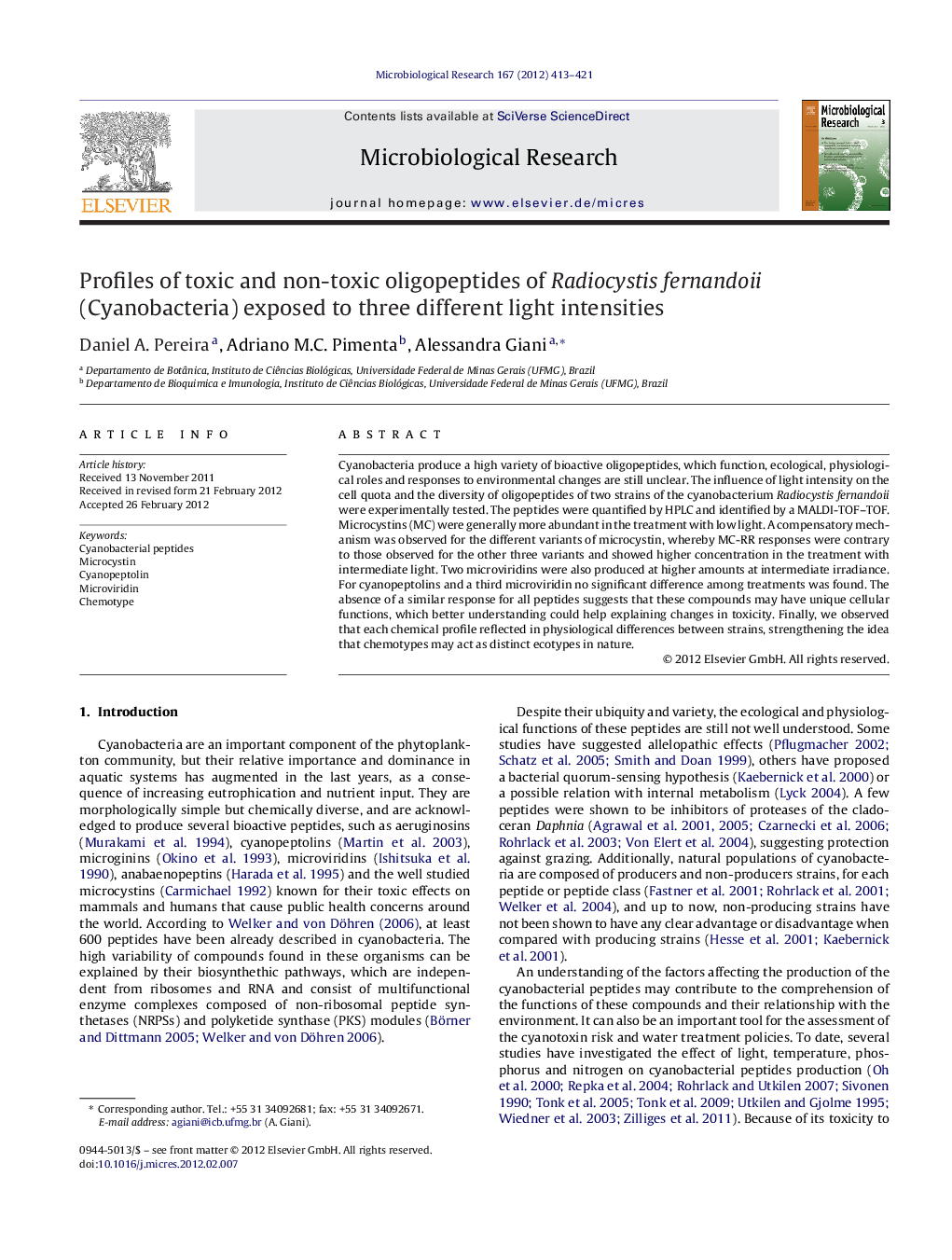| Article ID | Journal | Published Year | Pages | File Type |
|---|---|---|---|---|
| 2093050 | Microbiological Research | 2012 | 9 Pages |
Cyanobacteria produce a high variety of bioactive oligopeptides, which function, ecological, physiological roles and responses to environmental changes are still unclear. The influence of light intensity on the cell quota and the diversity of oligopeptides of two strains of the cyanobacterium Radiocystis fernandoii were experimentally tested. The peptides were quantified by HPLC and identified by a MALDI-TOF–TOF. Microcystins (MC) were generally more abundant in the treatment with low light. A compensatory mechanism was observed for the different variants of microcystin, whereby MC-RR responses were contrary to those observed for the other three variants and showed higher concentration in the treatment with intermediate light. Two microviridins were also produced at higher amounts at intermediate irradiance. For cyanopeptolins and a third microviridin no significant difference among treatments was found. The absence of a similar response for all peptides suggests that these compounds may have unique cellular functions, which better understanding could help explaining changes in toxicity. Finally, we observed that each chemical profile reflected in physiological differences between strains, strengthening the idea that chemotypes may act as distinct ecotypes in nature.
